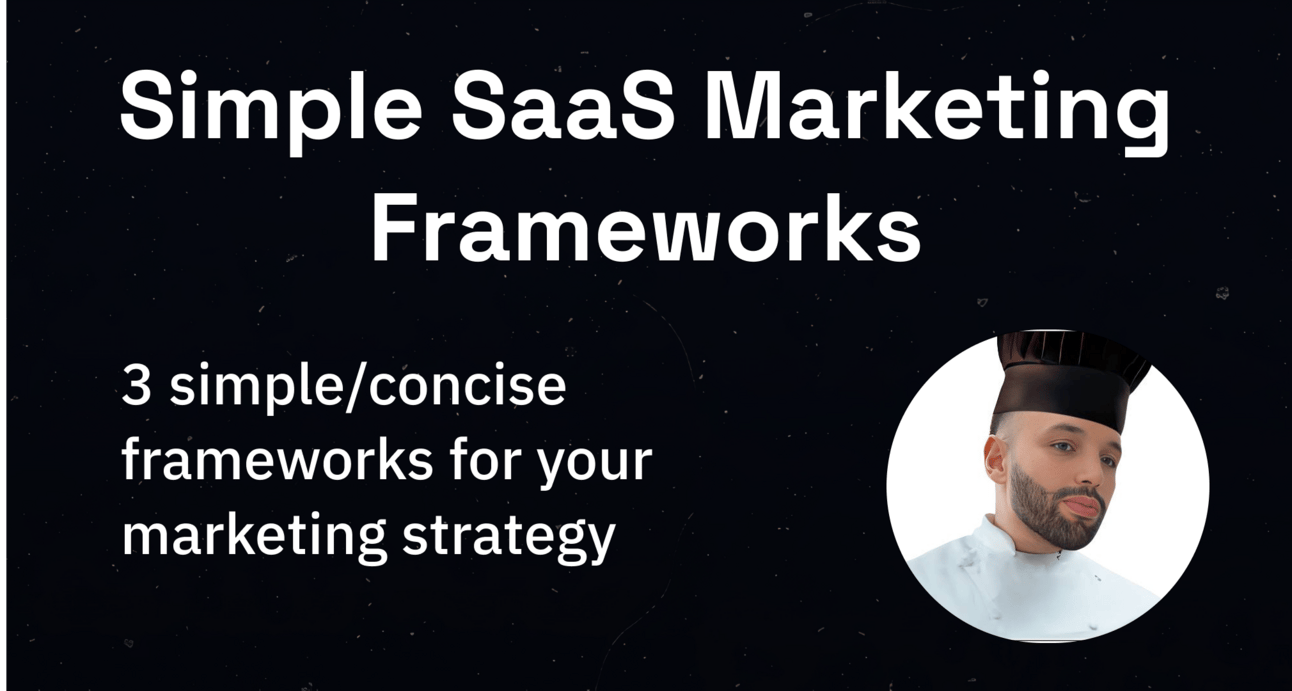- The Growth Recipe
- Posts
- 3 SaaS Marketing Frameworks
3 SaaS Marketing Frameworks
Read time: 5 minutes

Today we will delve into three essential frameworks.
Yes, there are many SaaS frameworks out there and these barely touch the surface. However, these play their role in the world of SaaS marketing.
These frameworks are designed to be simple/concise yet powerful, providing you with valuable insights for your marketing strategy.
Let’s get to it 👇
Framework 1 - Goal Setting:
Marketers love the strategy but lack setting clear goals. When setting objectives, you need a measurement of success After working in start-ups for a while, here is a 3 step framework to measure how successful you are:
1) You need the North Star goal:
These are lagging indicators /outcomes. It should not be something you can directly control or influence; rather, it should be the outcome of all your marketing efforts.
North Star examples:
300 SQLs per month
$350K MRR
50K NEW MRR
2) You then need KPIs:
Which are 3-5 supporting goals. These are the measurement and leading indicators of how to achieve the North Star goals. The inputs drive the outputs.
KPI Examples:
10% MoM Growth rate
5% lead velocity rate
25% lead conversion rate
3) You then need action plans /key projects:
Example for SaaS companies doing $1M+ ARR:
3+ Big channels
3+ big campaigns
3+ experiments
3+ updates/improvements
Framework 2 - Positioning:
A lot of companies spout technical jargon with features and vague benefits instead of the underlying transformation and desired outcomes that are of interest to ideal customers.
This is a problem because...
First impressions, you'll most likely get one chance when people visit your site.
You've only got their attention for so long.
There are other companies fighting for attention.
Great messaging and positioning are made with a combination of storytelling and defensible arguments. A simple framework to tell a compelling defensible: story:
Pain
Desires
Solution
Problems & pains:
What problem does your product fix?
What pains do they experience because of this problem?
What's the cause of the problem(s)?
How have they previously tried to fix the problem(s)
Desires:
What are they ultimately trying to achieve?
How does that translate into tangible results?
What would it mean for them to achieve their goals?
How would a solution to their problems change their lives?
How would it make them feel to alleviate their pains?
Solutions:
How can your product fix these problems and alleviate these pains?
How does your product work?
How is it unique and better than alternative solutions?
How easily can you switch or start using it?
What results are others getting?
Start with the pain of a problem and paint a picture of what life would be like without that pain. Then show how your product helps them kill the pain and get what they want.
Jumping straight to the 'Fix' without any context won't be compelling enough.
Starting with pain and desires gives people the right context to understand how your product alleviates the pain and helps achieve their desired outcome.
Ask yourself these 3 questions:
Why are you the best solution for your customers?
Why should someone care what you have to say?
Why should someone choose you over an alternative?
Framework 3 - Conducting Experiments:
How do you use the right channels where can you find and communicate with customers and how do you execute them with limited time and resources?
Here is a 5-step framework you can use to work through to find the channels that get results:
1) Gather: Brainstorm and write down every feasible idea.
2) Rank: Score each idea by the impact you think it'll have, how confident you are it'll have that impact and the effort it'll take to do.
3) Outline: Create a one-page brief that goes into concise detail and assign who does what, in what time/period, and how much budget you'll need for each.
4) Execute: Get it into your project management system and start working. Work on 2-3 experiments at a time to optimise.
5) Outcome: Assign each experiment result. For example, worked, failed, or inconclusive. Spend a few days investigating why. Take those learnings into the next experiments.
What should we start doing?
What should we stop doing?
What should we continue doing?
Focus on channels that will get you the results you need. Systematically plan and work through ideas using those 5 steps
Well, that’s it for now! Hope this is of value to you 👌
Rachid